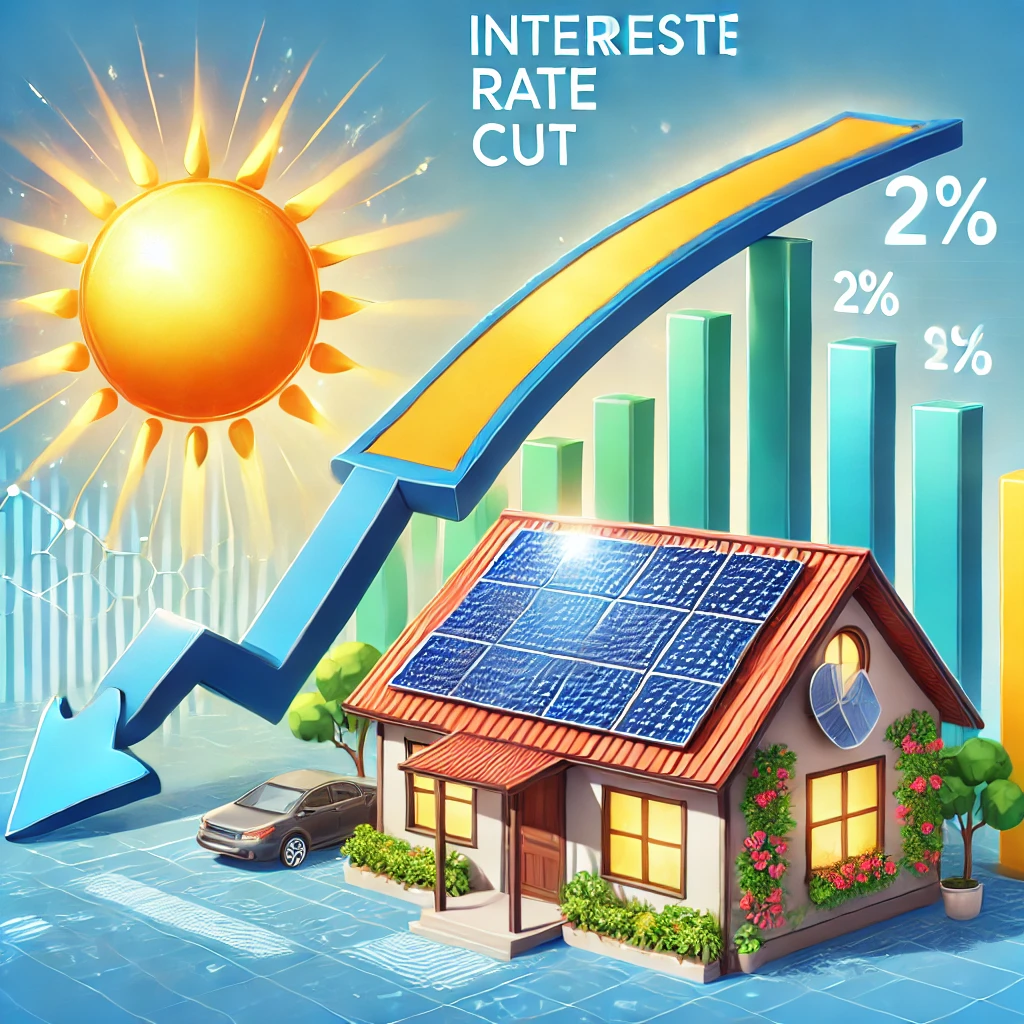Interest Rate Cut Boosts Renewable Energy Projects Expansion

`The renewable energy sector is experiencing a pivotal moment as a recent significant interest rate cut opens new opportunities for expansion. The 50 basis point reduction, announced by central banks, is poised to have a profound impact on the financing and development of wind and solar projects across the globe, providing a much-needed stimulus to the green energy market.
Understanding the Impact of Interest Rate Cuts on Renewable Energy
Interest rates are one of the most critical factors influencing the viability and attractiveness of renewable energy projects. Here’s why this recent cut is making headlines:
- Cost of Capital: Lower interest rates reduce the cost of borrowing, making it cheaper for companies to finance large-scale projects such as wind farms and solar installations.
- Investor Confidence: With reduced volatility in the financing environment, investors are more likely to support sustainable energy initiatives, leading to increased capital flow into the sector.
- Return on Investment: Enhanced financing conditions improve the ROI for stakeholders, encouraging longer-term investment commitments.
The Economic and Environmental Benefits
This reduction in interest rates is not merely a financial maneuver; it bears significant economic and environmental benefits:
- Job Creation: The expansion of wind and solar projects is projected to create thousands of jobs, from engineering and construction to maintenance and operations.
- Energy Independence: Developing more domestic energy resources reduces reliance on fossil fuels and enhances energy security.
- Carbon Emission Reductions: By accelerating the deployment of renewable energy sources, nations can reduce their carbon footprint, contributing to global climate goals.
Global Perspective: How Different Regions Are Reacting
The interest rate cut has different implications across regions depending on their dependence on sustainable energy and current infrastructure. Here’s how some key players are responding:
North America
North America is seeing a surge in plans for new solar farms and wind projects. This interest rate cut is expected to integrate seamlessly with existing governmental incentives, further bolstering the renewable energy landscape.
Europe
Europe, already a leader in renewable energy initiatives, is likely to capitalize on expanded financing to modernize its grid and invest in emerging technologies like hydrogen powered energy solutions.
Asia-Pacific
The Asia-Pacific region, especially China and India, is anticipated to double down on solar investments, utilizing cheaper loans to meet their ambitious clean energy targets and mitigate severe air pollution.
Challenges Still Ahead
While the interest rate cut is a positive sign, it does not come without challenges. Stakeholders in the renewable energy sector need to address several hurdles:
Infrastructure and Grid Capacity
- Enhancing existing infrastructure to cope with increased renewable capacity.
- Investing in energy storage solutions to manage intermittency issues associated with solar and wind power.
Regulatory and Policy Framework
- Aligning governmental policies and regulations with the accelerated deployment of renewable technology.
- Navigating potential opposition from entrenched fossil fuel interests.
Technology and Innovation
- Driving innovation in renewable technologies to decrease costs and increase efficiency.
- Incorporating smart solutions and digital technologies to minimize energy wastage.
The Future Outlook
The interest rate cut provides a timely boost to the renewable sector, but the journey toward a sustainable energy future is ongoing. As the industry adapts to the new economic landscape, opportunities abound for those prepared to innovate and evolve. Key areas of focus should include:
- Integrated Energy Systems: Encouraging cross-sector collaboration to create cohesive and efficient energy systems.
- Public-Private Partnerships: Leveraging partnerships to drive investment and technological advancement.
- Education and Training: Investing in skill development and education to sustain a growing renewable workforce.
In conclusion, the interest rate cut is a catalyst for change in the renewable energy sector, promising notable expansions and advancements worldwide. By addressing existing challenges and embracing new opportunities, nations can move closer to achieving sustainable energy goals while enjoying economic and environmental benefits.
